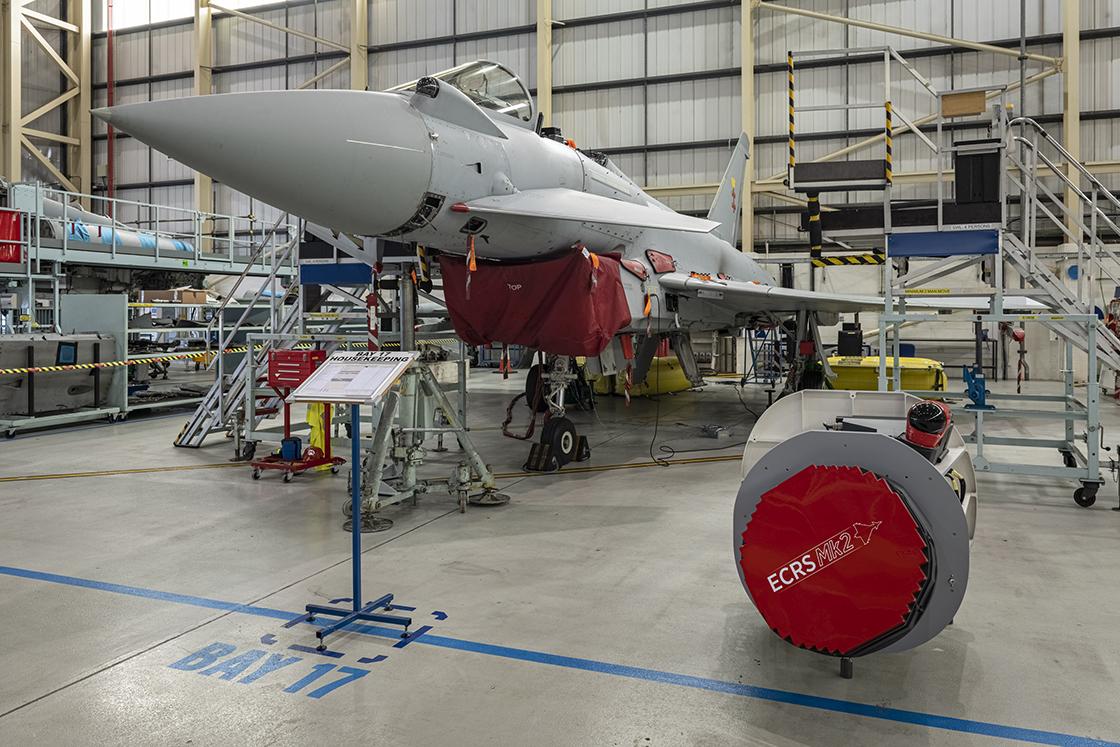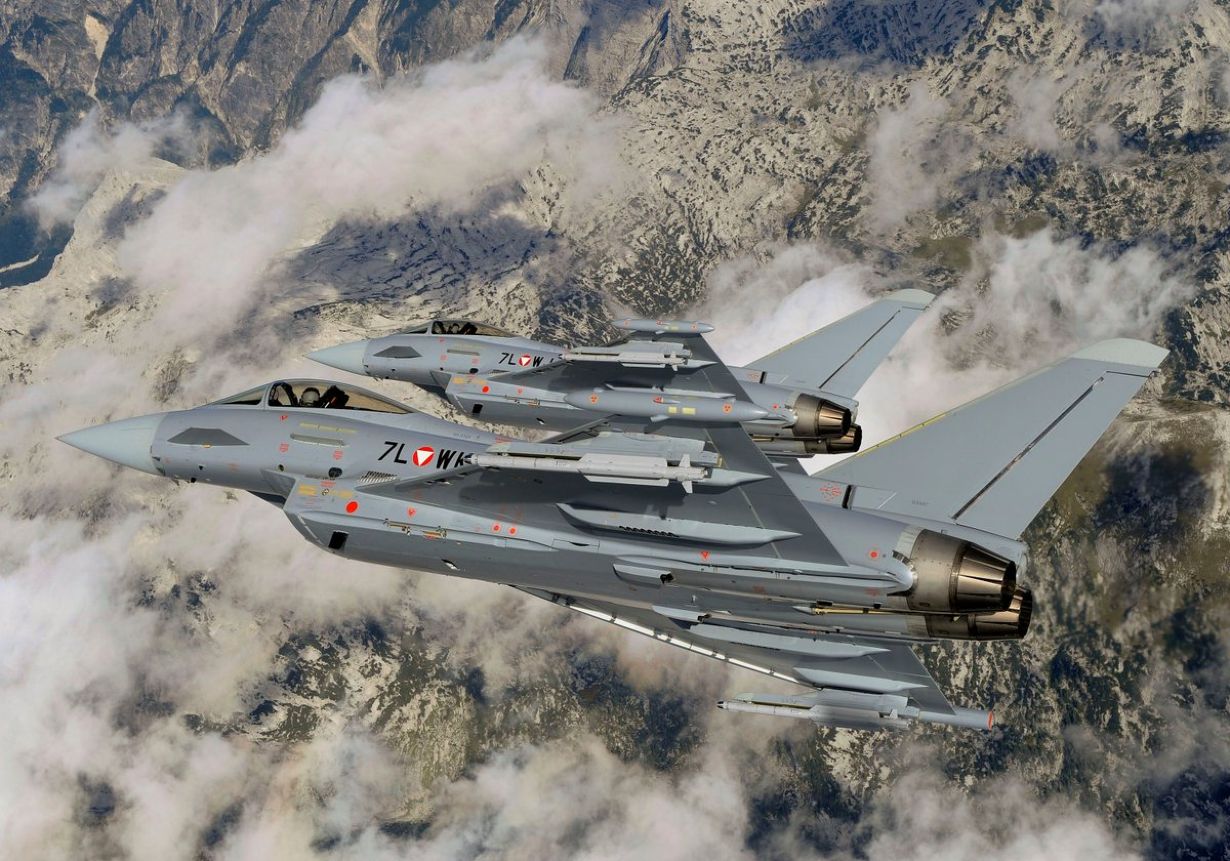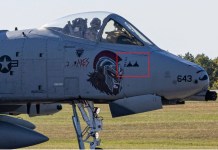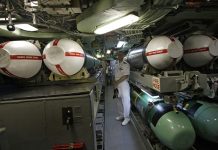The British Royal Air Force’s Eurofighter Typhoon fleet has inched closer to acquiring the powerful European Common Radar Architecture (ECRA) Mk.2 Active Electronically Scanned Array (AESA) radars.
Italian firm Leonardo delivered the first prototype to BAE Systems, one of the three companies of the consortium that developed the jet, at its latter’s Lancashire facility.
The handover is part of a July 2022 US$2.38 billion program to replace the aircraft’s existing Captor E-Scan radar. The incredibly powerful radar has a ‘multi-function array’ that supports simultaneous functions, like Electronic Warfare (EW), search, and targeting.
This enables the Typhoon to stop electronic jamming while maintaining a position far from the reach of adversaries.
The delivery will be followed by integration, a ground-based demonstration, and testing for the radar’s first flight aboard the Typhoon in 2024. Usually, during the prototype testing phases, the test results freeze the technical tweaks and modifications.
These are incorporated into the final series production model. BAE’s program director Richard Hamilton called the ECRS Mk2 the “backbone of air defense across the globe for decades to come.”
Radar & Electronic Warfare Rolled Into One
With the radars, Typhoon fighters can locate and deny an adversary using its radar with a powerful electronic warfare (EW) jamming attack without getting close to the target. The delivery of the radar itself is a part of the much broader Global Combat Air Program (GCAP) between the UK, Italy, and Japan, of which Leonardo and BAE are core members.

Mark Stead, Leonardo UK’s senior vice president of radar and advanced targeting, said the ECRA Mk.2 will allow Typhoon pilots to locate, “identify and suppress enemy air defenses,” which he called “a powerful combination of capabilities that will increase the GCAP’s Typhoon’s lethality and survivability, and the survivability of other friendly forces.”
This bares the emergence of EW as a vital dimension of warfare between conventional militaries, as has been evident from Russian EW in the ongoing Ukraine conflict. And with EW capability built within the radar, it minimizes the jet’s need for external or internal EW pods.
A slight tactical advantage is that the fighter can carry additional ordnance on the wing pylons, unlike the Swedish SAAB Gripen, the Chinese J-16D, or Russia’s Su-35S, which has external wing-mounted pods for EW systems.
‘Eyes’ On The ‘Perpendicular Side’ Too
The radar’s defining feature is that, like a mechanically scanned passive radar, it is also somewhat turntable, despite being a fixed AESA radar. In technical terms, it is called a ‘re-positioner,’ which is mounted on a single rotating joint, as opposed to the double swashplate arrangement of the Captor-E. AESA radars send their beams sideways electronically and do not have to turn in that direction physically.
The ECRS Mk. 2’s re-positioner enables the radar to be ’tilted’ on either side, offering a much broader ‘look’ angle beyond 90 degrees off the centerline of the jet. In other words, the jet can significantly enhance its sideways scanning by combining electronic and mechanical turning.
A particular air combat and tactical scenario it helps in is the ‘beaming’ maneuver, performed to evade detection by an enemy fighter. Beaming involves a fighter turning 90 degrees away (perpendicular) to an enemy’s pulse Doppler radar array, which uses a Doppler’ shift’ to measure a target’s relative velocity.
Doppler arrays filter out the low relative velocities of objects, like ground clutter and the ‘beaming fighter,’ which are not moving towards or away from the enemy radar.

This tactic helps when the enemy fighter is at a higher altitude than the beaming aircraft and trying to track and ‘lock’ its target in a look-down-shoot-down mode, where ground clutter also appears on its screen.
A fighter with an AESA or a mechanically scanned radar performing a beaming maneuver would lose the enemy’s radar picture significantly, if not completely. Moreover, the pilot might lose sight of the tactical situation if there are no third-party sensors – Airborne Early Warning (AEW) aircraft, drones, or other fighters – feeding this data to the beaming fighter via a data link.
Worse, any radar-guided missile the ‘beaming’ fighter fires will not be able to receive mid-course updates, drastically reducing its ‘hit probability,’ particularly if it is fired from a long range.
Thus, a ‘re-positioner’ that ’tilts’ the ECRA radar and steer the antenna on either side maintain the ‘sideway look’ for the ‘beaming’ fighter and ensures it does not lose its radar picture.
- The author can be reached at satamp@gmail.com
- Follow EurAsian Times on Google News




